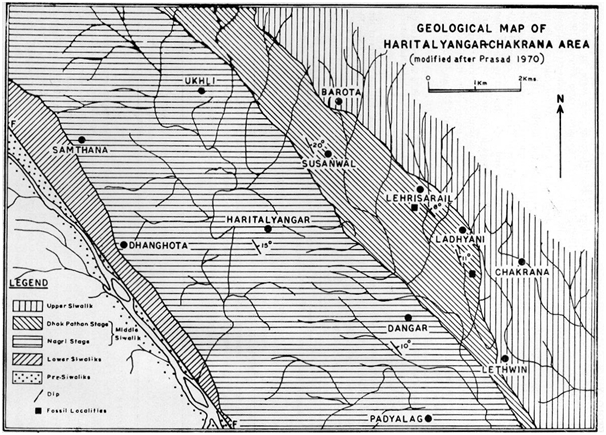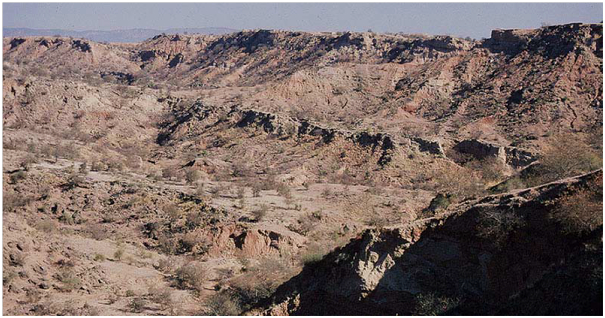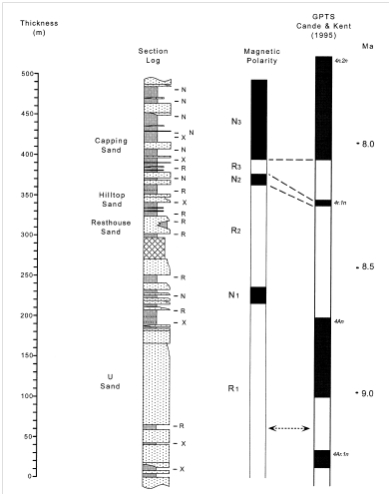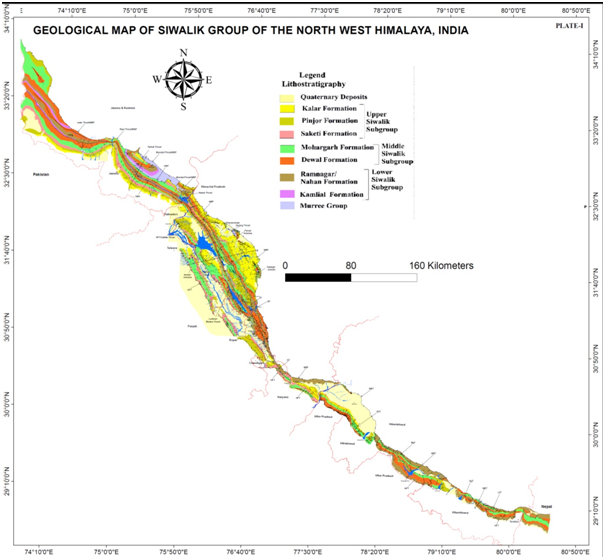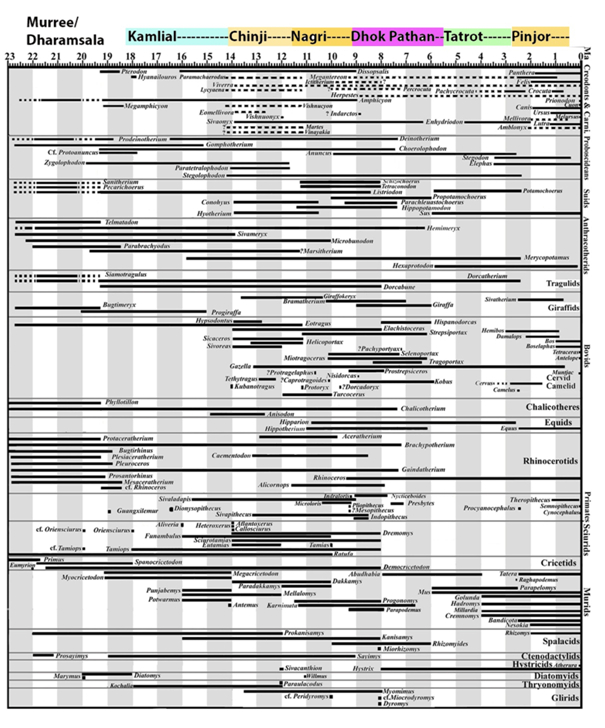Dhok Pathan Fm
Type Locality and Naming
Siwalik Gr. – upper formation in the Kohat-Margala Province (Ko-MP and the Trans Indus-Potwar Province (TrI-PP). Holotype section: Dhok Pathan village, Attock District. Hypo: Gaud River section, Mianwali District; Spintangi section, Quetta District. Reference section: None.
Author: G. E. Pilgrim, 1913.
Lithology and Thickness
Clayey sandstone. The formation is typically represented by monotonous cyclic alternations of sandstone and clay beds. The sandstone is commonly grey, gleaming white or reddish brown, thick bedded, calcareous. The clay is orange, brown, dull red or reddish brown, greenish yellow etc.
Thickness: 120-2,000 m. It is 1,330 m in Gaud section. 1,820 m in Khairi Murat Range, 120-300 m in Marri-Bugti and Quetta region, 1,330-1,500 m in eastern Sulaiman Range, 1,300-2,000 m in Sibi and Kachhi area, 1,500 m in Gaj River section
Relationships and Distribution
Lower contact
Conformably underlain by Nagri Fm (transitional).
Upper contact
Disconformably overlain by Suan Fm (Soan Fm) in Kohat-Margala Province (Ko-MP and the Trans Indus-Potwar Province (TrI-PP). Gradational in Kirthar Province and Quetta region.
GeoJSON
Fossils
The formation has yielded fairly rich assemblage of vertebrate remains like Indarctos salmontanus, Arctamphicyon lydekkeri, Ictitherium indicum, Mastodon (Trilophodon) browni, Dicoryphochoerus titanoides, Pachypor tax latidens var. dhokpathanensis, Hydaspitherium megacephalum, Hipparion punjabiense, Rhinoceros sivalensis and Pachyportax latidens.
Age
Depositional setting
Additional Information
